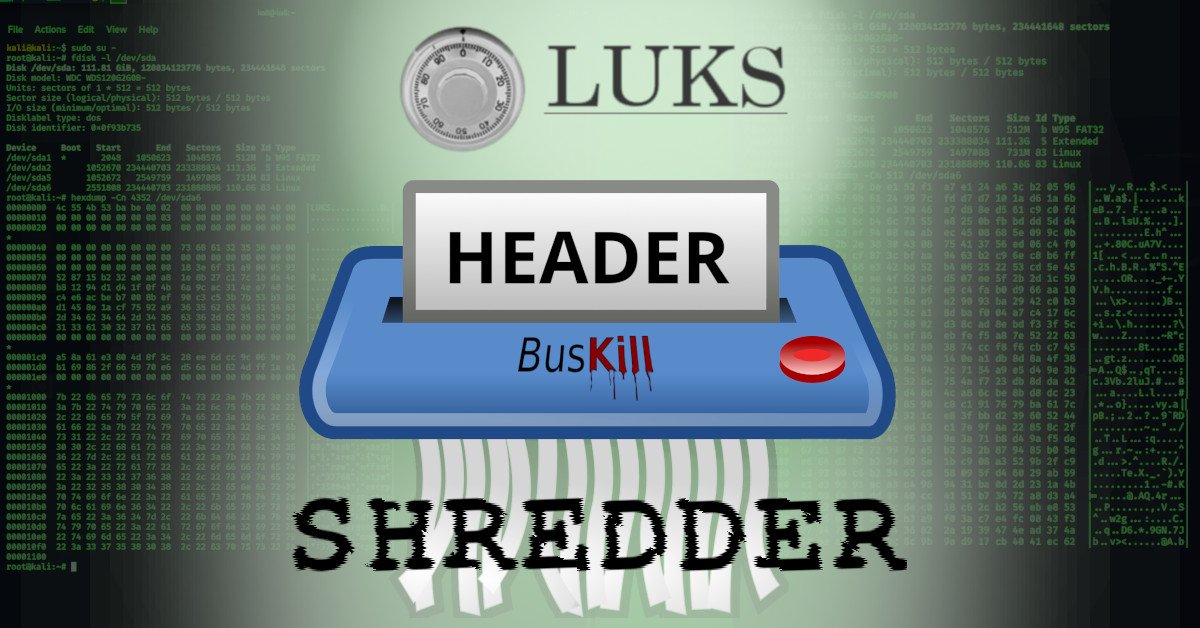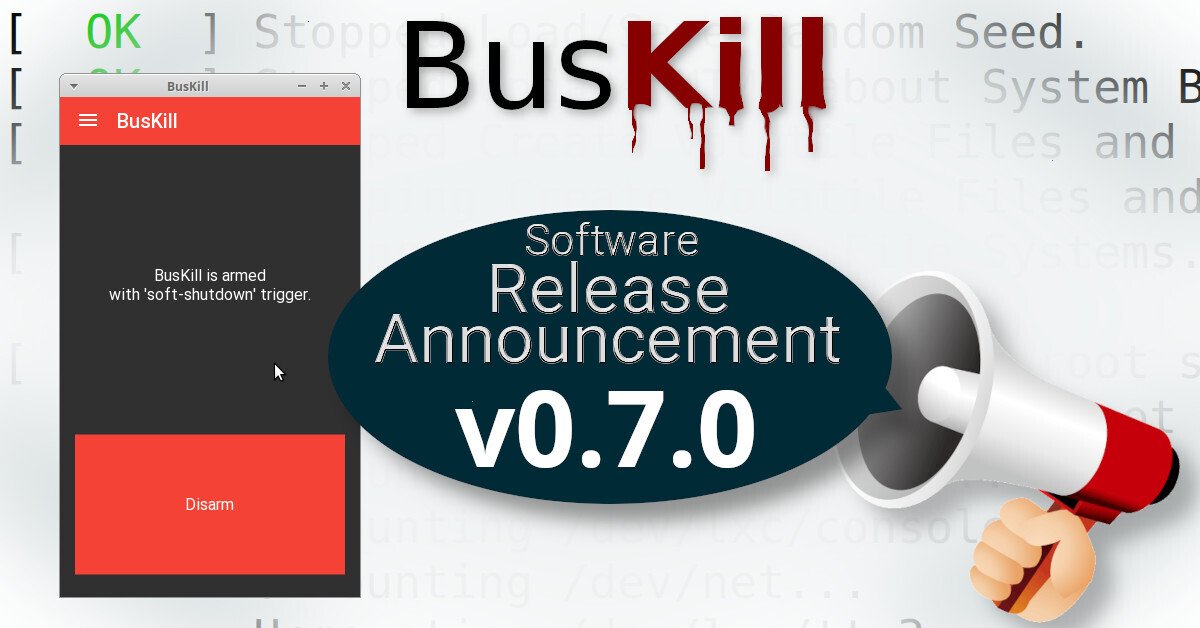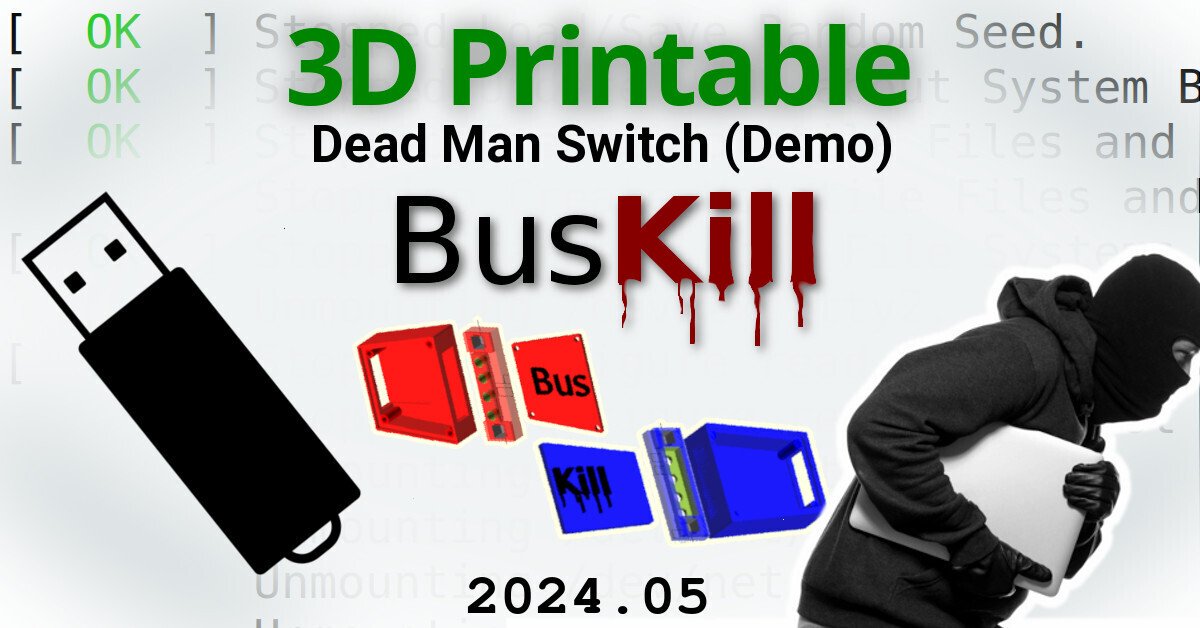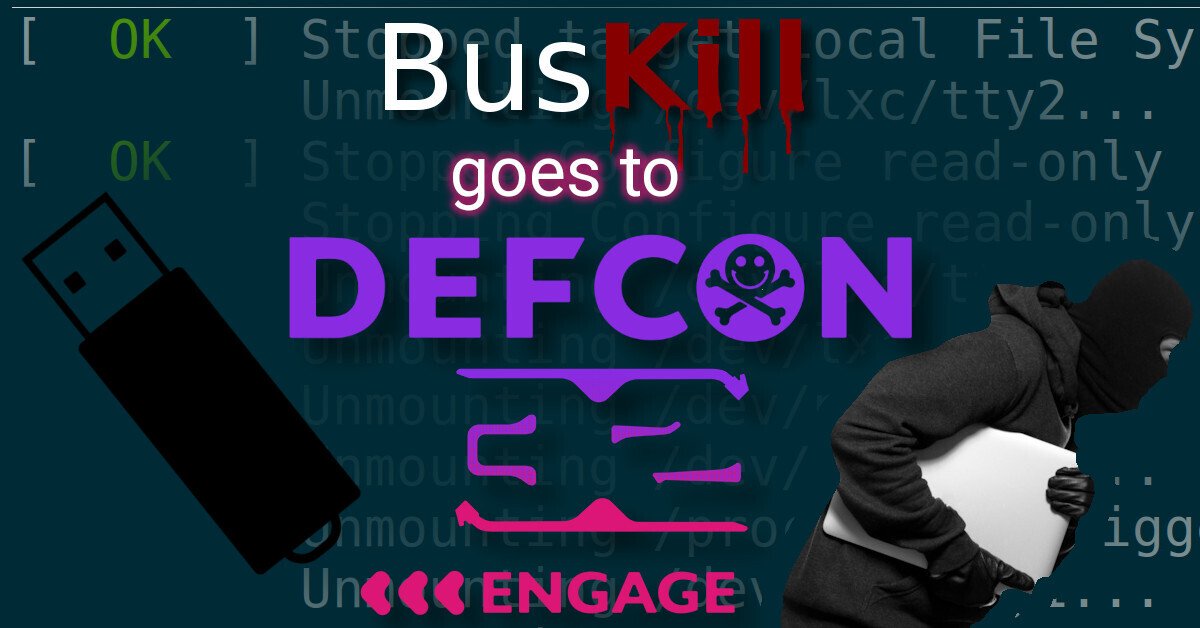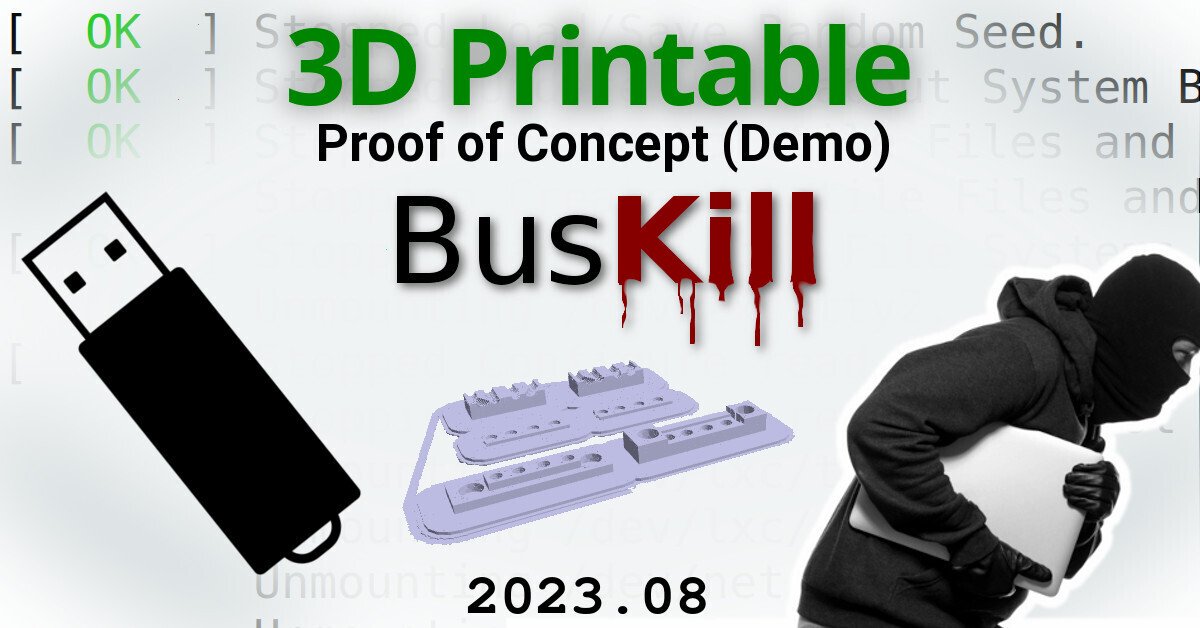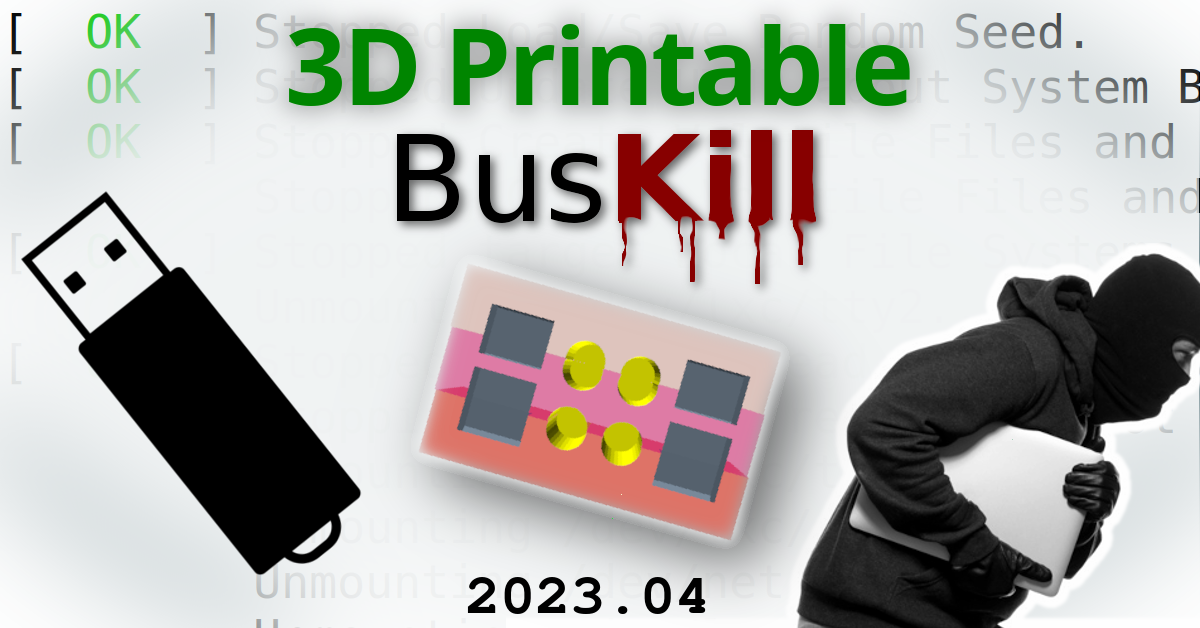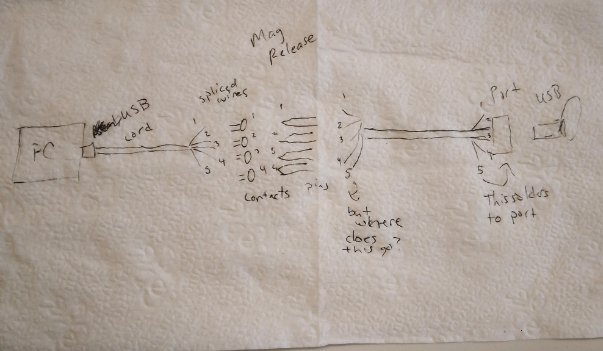We’re thrilled to announce that BusKill was the recipient of a $1,031 microgrant from FUTO!
Can’t see video above? Watch it on PeerTube at peertube.futo.org or on YouTube at youtu.be/Qr0VusrG1jE
We’re elated to see BusKill join the ranks next to CryptPad, ExifTool, KeePassXC, Whonix, Wireshark, Tor Project, Calyx, and numerous other awesome projects that have received grants from FUTO.
We’d like to express our deepest gratitude to the FUTO project for supporting future development of our hardware tool to protect journalists, activists, human rights defenders, whistleblowers, and others. Thank you!
Iterate with us!
Want to print your own BusKill cable? We’ll cover your expenses for filament, magnets, and pogo pins.
We plan to use these funds to document our 3D-Printable BusKill Dead Man Switch. And we need your help!
The BusKill project is looking for a volunteer to write the documentation describing how to print and build your own BusKill cable. The documentation will be written for our Sphinx Documentation Site in reStructuredText and pushed in git.
If you have access to a 3D-Printer, please contact us to receive funds to buy the components needed to document the build of a 3D-Printed BusKill.
What is BusKill?
BusKill is a laptop kill-cord. It’s a USB cable with a magnetic breakaway that you attach to your body and connect to your computer.
If the connection between you to your computer is severed, then your device will lock, shutdown, or shred its encryption keys — thus keeping your encrypted data safe from thieves that steal your device.
Support BusKill
If you want to help our open-source project, please consider purchasing a BusKill cable for yourself or a loved one. It helps us fund further development, and you get your own BusKill cable to keep you or your loved ones safe.
You can also buy a BusKill cable with bitcoin, monero, and other altcoins from our BusKill Store’s .onion site
To be notified about future updates, you can signup for our newsletter.


